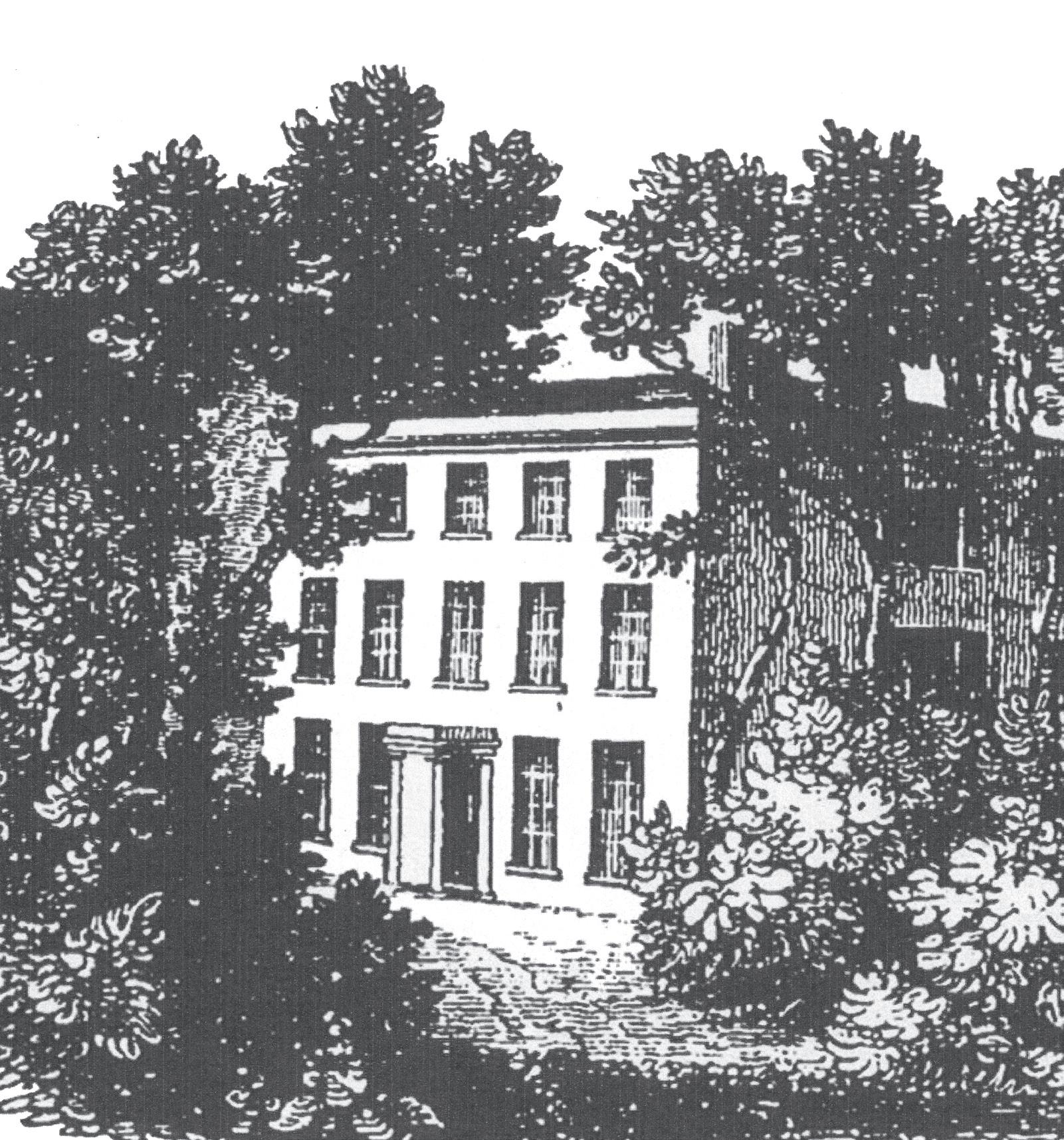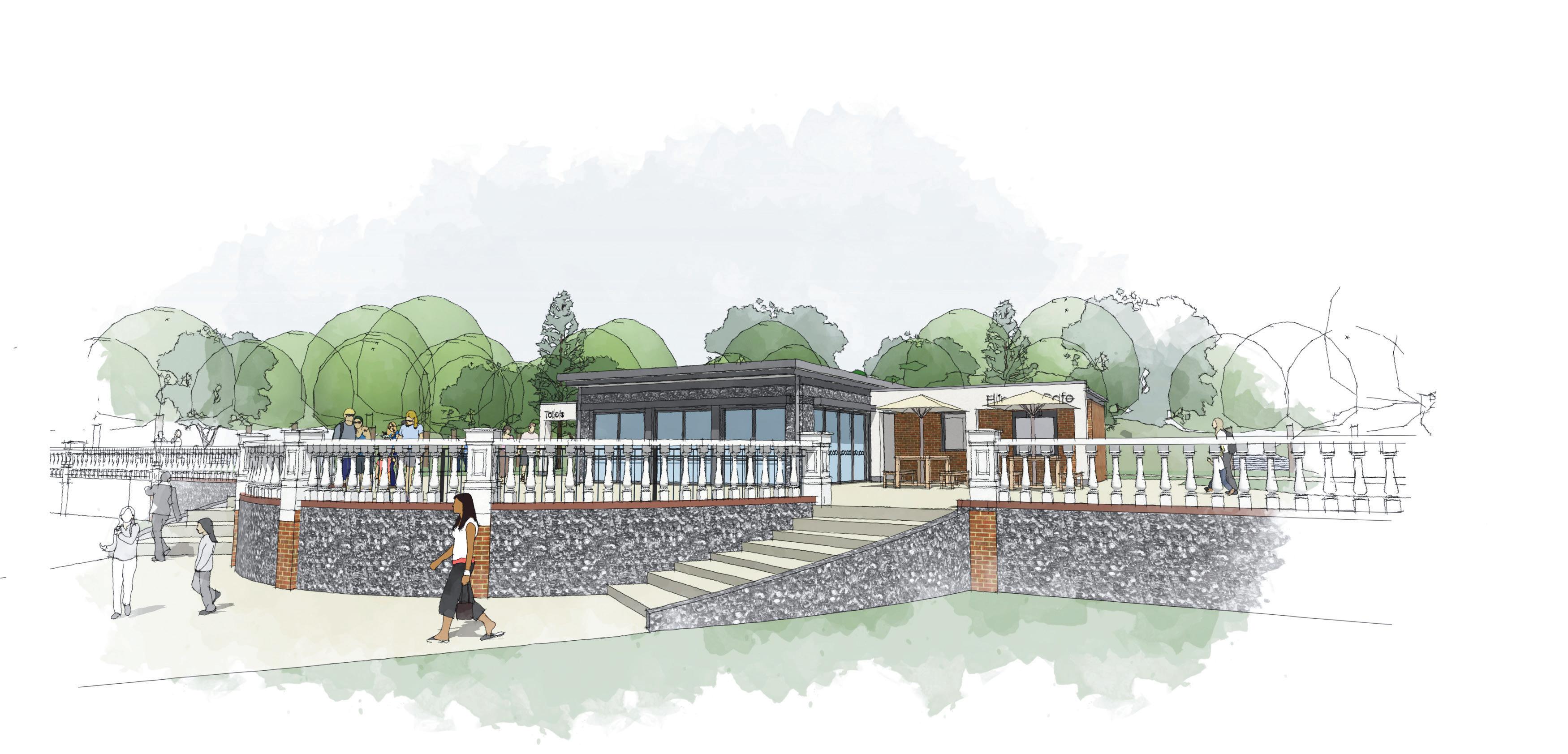
5 minute read
Parks and recreation - a look at
PARKS AND RECREATION: Ellington then and now
Writer
Advertisement
Rachel Mills
Images courtesy of
Friends of Ellington Park Archive Collection and Thanet District Council
Ellington Park is having a very modern update but its history is long, sometimes grisly, and it is the Victorians we have to thank for this welcome green space

The newly restored bandstand
In the 16th century, if you stood in Ellington Park where the bandstand is today, you would have seen Ellington House and a few other buildings around it. Ellington was a tiny hamlet in the historic parish of St Laurence, separate to the fishing village of Ramsgate (or Ramesgate, as it was known then).
The house was the seat of a freehold farm of medieval origin that passed from the Thatcher family to the Spracklings (also spelled Sprakeling), then the Troward family - who demolished and rebuilt the house in the early 1700s - and the Garretts, before it was bought by Edward C Hales Wilkie, Deputy Lieutenant and Justice of the Peace in Kent and the Cinque Ports, in the mid 19th century. The most notorious of all the owners is Adam Sprackling, grandson of a knight under Queen Elizabeth I. A handbill from 1653 described how in a drunken rage, he “cut, mangled and murchered” his wife Katherine Lewknor and butchered her six dogs. He was hanged in Sandwich for her murder and is thought to be buried in St Laurence’s Church. Some say that his wife’s screams are still heard in the park today.
By the end of the 19th century Ramsgate had been transformed into a fashionable seaside resort and Victorian developers had turned their attention inland. Much of Ellington Estate was sold before the Ramsgate Corporation stepped in to purchase some of the town’s last green space, along with Ellington House, which they demolished. Despite Victorian values being as much economic as philanthropic (recreation and exercise helps people live and work for longer), parks had become a source of civic pride across Britain. When it opened in 1893 Ellington Park became the beating heart of Ramsgate’s leisure time.
Maureen Walker, who was born in Ramsgate in 1924, contributed her memories of the park to the council’s digital archive project. She remembered “evenings full of pleasure… firework nights once a week in the summer season, community singing and people selling magazines like Tit-Bits and John Bull”. There were fairs, pageants, carnival queen contests and Empire Day celebrations when thousands flocked to the park; the St Lawrence Bowls Club started playing here in the 1940s and a miniature steam railway was opened in the 1970s.
Fast-forward to 2010, and things weren’t looking so bright. Community police officers organised a meeting to generate interest in a community group for Ellington Park, which had become a ‘no-go area’ due to anti-social behaviour and a lack of basic amenities. The Friends of Ellington Park was born and, in 2012, Beverley Perkins joined as chair. Despite describing herself as “not a joiner by nature”, Bev headed up a decade that saw over 700 shrubs and trees planted in the

wildlife garden (a copse is planned in an extended area) and herb beds, benches, picnic tables and a tennis table installed. Bev sings the praises of the 300-strong membership of the Friends of Ellington Park and “a team of volunteers that work tirelessly”.
The Friends went on to partner with Thanet District Council and, after years of fundraising, secured £1.8 million in National Lottery Heritage Fund money for a fiveyear park regeneration project.
Professional tree surveys were carried out by the council, which led to the recommendation to fell trees that were “diseased, dead, dying or at the end of their natural life”. As a landscaped park, it has always been managed, but the removal of cherished decades-old cherry trees was met with some local protest. Bev says not a single tree has been removed for aesthetic reasons and the council states that 50 mature trees, not saplings, are to be planted in their place.
The council’s project officer Hayley White is passionate about the park’s long-term regeneration. As she walks the pathways laid out by the original landscape architects, Joseph Cheal & Son, she points out where the new toilets and not-for-profit café and community space will be, and enthuses about the restoration of the 110-year-old bandstand.
The bandstand - not the original, which was sadly dismantled less than a decade after it was erected, but a late Victorian replacement made by the historic MacFarlane iron foundry in Glasgow - has been restored by Lost Art. These Wigan-based bandstand specialists have revived traditional British crafts including blacksmithing, pattern-making and stonemasonry. Hayley explains that they stripped back decades-long layers of paint to uncover, analyse and recreate the original green-and-yellow colours from more than a century ago. Local specialist conservation and heritage bricklayers Georgian Brickwork, have worked alongside to restore the brick and stonework.
As the regeneration work in Ellington Park progresses, with the bandstand back in its place, albeit still under wraps, and diggers at work, the connection between those forward-thinking Victorians who purchased the land, and the Friends and volunteers who so lovingly tend it, is apparent. There are plans for future events focused on the park’s history and people are invited to submit their memories to grow the digital archive. Ellington Park has 80,000 individual visits a year. For Hayley, the past shapes the vision for its future: “How amazing to build and input into something that has this really lovely rich history.”











